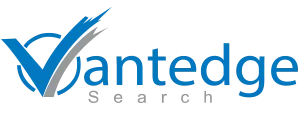- The 2024 Conundrum: Workforce Realities vs. Market Optimism
- Expert’s Corner: The Art and Challenge of Leadership – A Closer Look
- Executive Movements: Transitions and Pivots
- The Art of Executive Networking: Enhancing Career Prospects and Industry Influence
View From The Top

Rajesh Khanna,
President,
Vantedge Search
In the latest View From The Top, we address the pressing theme of the March 2024 Vantedge Point: the dichotomy between workforce layoffs and a seemingly optimistic market. Despite over 5,000 companies reducing their workforce in the last year, there’s a strategic shift towards streamlined, efficient operations that hold promise for the future. We’ll dissect the multifaceted economic shift prompting these changes, the immediate personal impacts, and the broader economic implications.
We’re also tapping into the collective wisdom of CEOs and industry leaders who are pioneering new strategic paths amidst this upheaval. By fostering diverse connections and prioritizing upskilling, there’s hope for a resilient job market that’s adaptable and inclusive. Join us as we explore the roles of evolving leadership, the art of networking, and the continuous learning required to navigate these transformative times.
The 2024 Conundrum: Workforce Realities vs. Market Optimism

As we progress into 2024, the global job market is grappling with an alarming trend of mass layoffs, signaling a profound economic shift. Since the onset of 2023, the crisis has been escalating, with over 5,487 companies announcing significant workforce reductions. This trend has intensified in 2024, with an additional 776+ companies declaring layoffs by January’s end, underscoring a persistent and growing challenge in the global employment landscape. The scope of these layoffs is not limited to any single sector, indicating a widespread impact across various industries.
A particularly stark illustration of this trend occurred in the week of February 22-28, 2024, which witnessed a series of high-profile layoffs. Sony made a major move by laying off 900 PlayStation employees and shutting down its London Division, while popular dating app Bumble reduced its staff by 350. Defense contractor Northrop Grumman announced up to 1,000 job cuts, and Vice Media also entered the fray with hundreds of layoffs. These incidents were not isolated; major players like Continental AG, Cisco Systems, ThyssenKrupp AG, Nike, Bell Media, Estee Lauder, Ford, Miele, UPS, Deutsche Bank, American Airlines, and Okta also announced substantial reductions in their workforce. These layoffs spanned a broad spectrum of industries, from technology and automobile to banking and aviation, highlighting the pervasive and profound nature of the employment challenges facing economies worldwide.
A multifaceted economic shift
From established technology firms to key players in the automotive sector, companies are reevaluating their workforce in response to changing market dynamics. This shift is multifaceted, driven by factors such as evolving consumer demands, technological advancements, economic downturns, and even geopolitical influences.
Impact on the global workforce
The immediate impact of these layoffs is significant and deeply personal. Thousands of individuals are facing job loss, which not only affects their personal finances but also their career trajectories and psychological well-being. The uncertainty created by such a job market can lead to reduced consumer spending and confidence, further exacerbating economic slowdowns.
Moreover, these layoffs signal a shift in skill requirements. As industries evolve, there is a growing need for upskilling and reskilling, placing additional pressure on both employees and job seekers to adapt to new technological demands and job roles.
Economic implications
Economically, the trend of mass layoffs and hiring freezes can lead to a ripple effect across sectors. Reduced spending power of laid-off employees can impact consumer-driven industries, while companies scaling back their operations can affect supplier industries and service providers. Furthermore, large-scale layoffs can lead to increased reliance on social safety nets, impacting public finances.
The future of work
In a notable development within the tech industry, Meta CEO Mark Zuckerberg recently shed light on the ongoing trend of layoffs. Speaking on the Morning Brew Daily’s podcast, Zuckerberg revealed that the surge in layoffs initially stemmed from correcting the over-expansion of workforces during the e-commerce boom. However, this narrative has evolved; companies are now recognizing the benefits of operating with smaller, more efficient teams. Zuckerberg pointed out that Meta has reaped advantages from downsizing its workforce and streamlining management layers, a trend that’s becoming prevalent across the tech sector, as seen in Meta’s subsidiary, Instagram, which has reduced roles such as technical program managers. He emphasized that this shift is not solely a reaction to pandemic-related challenges but is part of a strategic commitment to long-term operational excellence. Zuckerberg also clarified that artificial intelligence, despite being a significant area of investment, was not a primary driver behind these layoffs. Instead, the focus on leaner structures reflects a deliberate move towards enhanced efficiency, marking a strategic pivot in how tech companies are shaping their futures.
The trend of layoffs, therefore, brings into focus the future of work. Organizations are increasingly moving towards automation, artificial intelligence, and digital platforms, fundamentally altering the nature of work and employment. The gig economy is also on the rise, presenting both opportunities and challenges in terms of job security and benefits.
In the corporate world, these layoffs may prompt a reassessment of workforce strategies. Companies might explore flexible staffing models, invest more in employee training and development, or adopt more sustainable and long-term human resource planning.
The hope for recovery and adaptation
Despite the current challenges, there is potential for recovery and adaptation. Industries may bounce back as market conditions stabilize, and new job opportunities may emerge in emerging sectors. Governments and educational institutions have a crucial role in supporting the transition, offering retraining programs and facilitating job-matching services.

In a broader sense, this period could be a catalyst for positive changes in labor practices and workplace norms, potentially leading to more resilient and adaptable employment ecosystems. For CEOs especially, this means developing strong skills, such as networking, as a tool to empower themselves as they look to navigate labor market changes. Fostering diverse connections can provide insights into evolving industry trends and talent needs. This can also facilitate collaborations and partnerships, offering novel solutions and strategies to adapt to the dynamic workforce landscape.
As we continue to navigate through these uncertain times, our collective focus should, therefore, be on building a labor market that is not only economically robust but also empathetic and supportive of the workforce’s evolving needs. The hope is for a future where the job market is not only stable but also more inclusive and adaptable to the changing tides of the global economy.
For more information on Vantedge Search, please contact us. We look forward to hearing from you.
Expert's Corner –
What's Trending?
The Art and Challenge of Leadership: A Closer Look
Ever wondered why some days as a leader feel like you’re effortlessly guiding your team through victories, while on others, it feels like you’re trying to navigate through an impenetrable fog? It turns out, the secret to these ups and downs is deeply rooted in our psychology.
“Why Real-Time Leadership Is So Hard” from Harvard Business Review is a rather interesting read in this regard. It turns the spotlight on the inner workings of a leader’s mind, revealing that the journey of leadership is as much about overcoming psychological barriers as it is about external actions.
There are four common traps that can ensnare even the most seasoned leaders: feeling like there’s no way out, no hope, no time, and sometimes, believing there’s no need for leadership at all. But here’s the kicker: breaking free from these mental blocks is both possible and the key to unlocking a level of leadership that not only achieves goals but inspires everyone around you to reach for their best. So, how do we transcend these barriers?
The No-Alternatives Conundrum
Leaders sometimes believe there are no other viable options or paths forward. This mindset limits creativity and hinders effective decision-making.
The antidote: Leaders should actively explore alternative approaches, seek diverse perspectives, and challenge assumptions. By widening their mental landscape, they can discover innovative solutions.
The No-Hope Scenario
When hope wanes, leaders become resigned to their circumstances. Hopelessness stifles innovation and prevents bold actions.
The antidote: Cultivating hope involves focusing on positive outcomes, envisioning a better future, and believing in the possibility of change. Leaders can inspire hope in their teams by communicating a compelling vision.
The No-Time Challenge
Feeling overwhelmed by time constraints, leaders often prioritize urgent tasks over strategic thinking. This short-term mindset undermines proactive leadership.
The antidote: Leaders must allocate time for reflection, strategic planning, and long-term vision. Prioritizing what truly matters and delegating effectively can create space for strategic thinking.
The Leadership Need Mystery
Underestimating their impact, some leaders think their role is insignificant or that others can handle things without them. This mindset diminishes their influence.
The antidote: Recognizing the value of their leadership, even in seemingly small ways, empowers leaders to make a difference. They should actively engage, communicate, and lead by example.
In essence, effective leadership transcends mere skills—it involves an enlightened inner state where leaders tap into their highest potential, inspire others, and navigate challenges with resilience. By addressing the misreading, leaders can create a positive impact and lead more effectively.
Executive Movements:
Leadership Transitions & Strategic Pivots
CEO Movements
iRobot has announced leadership changes, with founder and CEO Colin Angle stepping down to become a senior advisor and board member, and Glen Weinstein, the chief legal officer, stepping in as interim CEO.
Tony Spring, previously at the helm of Bloomingdale’s, is taking over as Macy’s CEO on February 4, 2024, succeeding Jeff Gennette, who retires after a distinguished 40-year tenure. Spring’s transition to CEO follows his role as president and CEO-elect since March 2023, during which he led key areas including Macy’s digital, customer, merchandising, and brand strategies, alongside his responsibilities for Bloomingdale’s and Bluemercury.
Effective February 1, 2024, Kim Kelderman has been appointed as the new President and Chief Executive Officer (CEO), simultaneously joining Bio-Techne’s Board of Directors. Kelderman, with his rich background in steering large, international life science tools enterprises, is ideally positioned to lead Bio-Techne into its next phase of growth and innovation.
Kevin Hykes takes the helm as President and CEO of CVRx, effective from February 12, 2024. Hykes, succeeding the retired Nadim Yared, is recognized for his extensive experience in global commercialization of innovative therapies.
NETGEAR, Inc. has announced the retirement of its CEO and Chairman, Patrick C.S. Lo, marking the end of an era for the global networking company. Charles (CJ) Prober will immediately take over as CEO and join the Board of Directors, following a unanimous board decision. Lo will serve as a strategic advisor until July 2024 to facilitate a smooth transition, highlighting his significant contribution to NETGEAR’s success over nearly three decades.
A leader in life sciences, diagnostics, and safety testing, Agilent Technologies is undergoing a significant leadership transition, with Padraig McDonnell, currently the president of the Agilent CrossLab Group (ACG), being named as the CEO-elect and Chief Operating Officer (COO).
ABB, a global leader in electrification and automation, announced a significant leadership change with Morten Wierod being appointed as the new Chief Executive Officer (CEO), effective August 1, 2024. He will be taking over from Björn Rosengren, who has been serving as CEO since 2020 and will retire at the end of the year following his step down on July 31, 2024.
Starlab Space, the joint venture between Voyager Space and Airbus appointed Tim Kopra, a retired NASA astronaut and Voyager executive, as its new CEO. Kopra, who previously managed the Starlab program at Nanoracks, will also join the Starlab Board of Directors, aiming to revolutionize space exploration and the commercial space sector. Alongside him, Mohit Sharma, formerly Head of Mergers and Acquisitions Finance at Airbus Defence and Space, steps in as CFO.
Gene Boehm has been named the President and CEO Designate of AAA, Inc., effective April 1. Boehm, taking the reins from the retiring Marshall Doney who led AAA for a significant part of his 40-year tenure, is set to oversee the national team that supports over 57 million AAA members across the United States.
Robert A. Michael has been appointed as the new CEO of AbbVie, set to take over from Richard A. Gonzalez, who has led the company since its inception in 2013. Gonzalez will step into the role of Executive Chairman of the Board starting July 1, 2024.
Soft Robotics, a leader in AI-enabled machine vision and robotic automation, appointed Mark Chiappetta as its new President and CEO. Chiappetta, who has been with the company since its inception, first as Chief Technology Officer and then as Chief Operating Officer, has been instrumental in evolving Soft Robotics from a startup to a respected provider of robotic picking and inspection solutions.
CFG Bank has appointed Jack Dwyer as its new Chief Executive Officer (CEO). Dwyer, founder of Capital Funding Bancorp, the parent company of CFG Bank, brings extensive experience in the financial sector to his new role.
Paul Thwaite has been confirmed as the new chief executive of NatWest. This appointment follows the bank’s announcement of better-than-expected profits, with a 20 percent increase in pre-tax profits to £6.2 billion in 2023. Thwaite succeeds Alison Rose, whose tenure saw some controversy, including the closure of Nigel Farage’s bank account for commercial reasons.
Kimberly Murphy has stepped down as CEO of Oragenics, Inc., following a mutual agreement, effective February 12, 2024. She will, however, continue as a member of the company’s board of directors. In the interim, Charlie Pope, Chairman of the Board, will serve as Executive Chairman, and Michael Redmond, President of Oragenics, has been appointed as the Interim Principal Executive Officer.
Ariane Gorin has been appointed as the new CEO of Expedia Group, effective May 13, 2024, succeeding Peter Kern. Gorin, with a history of executive roles at Expedia since 2013 and notable success as President of Expedia for Business, is praised for her leadership skills. Kern will continue as Vice Chairman and Board member, aiding the transition.
Mitchell Baker is transitioning from CEO to Executive Chairwoman of Mozilla Corporation, a role she previously held with distinction. Laura Chambers, a board member with extensive experience at companies like Airbnb, PayPal, eBay, and Willow Innovations, is stepping up as the new CEO.
Chevron Phillips Chemical has announced Steve Prusak as its new president and CEO, starting March 1. Prusak, a veteran in the chemical industry, has been with the company since its foundation and currently serves as senior vice president of corporate planning and technology. He succeeds Bruce Chinn, who is retiring after a 40-year career.
CFO Movements
BP: Kate Thomson steps in as the permanent CFO at BP, marking a significant change in leadership following the sudden resignation of former CEO Bernard Looney in September.
Costco: Gary Millerchip joins Costco Wholesale as CFO, replacing Richard Galanti who will retire on March 15. Millerchip’s move is notable, especially with Kroger’s ongoing deal with Albertsons.
Walgreens: Manmohan Mahajan ascends from interim to permanent CFO at Walgreens Boots Alliance, succeeding James Kehoe who left for a tech sector opportunity.
Solo Brands: Laura Coffey takes the CFO role at Solo Brands. She brings experience from her previous three-year stint as CFO of The Vitamin Shoppe.
Chegg: David Longo is now Chegg, Inc.’s CFO, taking over from Andrew Brown who retired after more than a decade with the company. Longo has been part of Chegg since December 2021.
Greenbacker: Christopher Smith brings over two decades of energy sector finance experience to his new role as CFO at Greenbacker Renewable Energy Company LLC.
Gordon Food Service: Company veteran Ryan Fischer is appointed CFO of Gordon Food Service Inc., succeeding Jeff Maddox who retired after a 20-year tenure.
TTEC: Kenneth “Kenny” R. Wagers III steps in as CFO at TTEC, a leader in global CX technology and services, starting March 1, 2024.
CIO Movements
HCA Healthcare: Chad Wasserman has been named Senior Vice President and Chief Information Officer of HCA Healthcare. A long-standing member of the team with nearly 30 years at the company, Wasserman replaces retiring Marty Paslick, who contributed 38 years.
Rimini Street: The company has appointed Gertrude ‘Trude’ Van Horn as Executive Vice President and Chief Information Officer. Van Horn, an experienced CIO, will lead the vision and execution of the company’s global IT and security sector growth strategy.
Tosca: Nigel Lemmon was appointed as the Chief Information Officer (CIO) at Tosca. His focus will be on leading digital transformation initiatives and leveraging technology to enhance services for both internal and external stakeholders.
MyComplianceOffice: Conor O’Kane has been appointed as the Chief Information Officer of MyComplianceOffice (MCO), a leading provider of integrated compliance management software. With over 25 years of experience, including his previous role as CIO at e-commerce giant eShopWorld, O’Kane brings extensive expertise in scaling and transforming technology organizations.
Insights: Inferring the why
A deeper look at the CEO movements across industries indicates several key trends:
Leadership transitions and company evolution: The changes in CEO positions across industries like technology, retail, life sciences, and finance signal a broader trend of organizational evolution. Companies are increasingly seeking leaders who can navigate complex economic environments, adapt to rapid technological advancements, and address evolving market demands. The transition from long-standing CEOs to new leadership often marks a strategic shift, indicating an emphasis on innovation, digital transformation, or a re-alignment of business priorities.
The role of internal promotion vs. external recruitment: Many of these transitions involve promoting internal candidates who have a deep understanding of the company’s culture and operations. This approach suggests a preference for continuity and stability, especially in times of uncertainty. However, some companies opt for external recruitment, indicating a desire for fresh perspectives and new strategies to drive growth or initiate significant changes.
Strategic focus on operational efficiency and market adaptation: Several of these leadership changes come at a time when companies are focusing on streamlining operations, cutting costs, or pivoting business models. We need to view this trend against a broader economic context where efficiency, agility, and the ability to quickly adapt to market changes are critical for survival and success.
Navigating challenging economic conditions: The number of transitions implies that companies are gearing up to navigate challenging economic conditions, such as market volatility, changing consumer behaviors, and technological disruptions. New CEOs are expected to have the vision and capability to steer companies through these challenges while capitalizing on new opportunities for growth and expansion.
Emphasis on innovation and long-term growth: The appointment of leaders with backgrounds in driving innovation and strategic growth suggests a focus on long-term sustainability rather than short-term gains. Companies are looking for CEOs who can not only address current challenges but also lead the organization into the future by fostering innovation, exploring new markets, and building resilient business models.
The Art of Executive Networking: Enhancing Career Prospects and Industry Influence
In today’s rapidly evolving job market, mastering networking skills is more than just a professional asset. It has emerged as a critical tool for navigating and influencing workforce and employment trends. As industries undergo transformation, driven by technological advancements, globalization, and changing economic landscapes, the ability to connect with a diverse range of professionals can provide executives with unique insights and opportunities. Networking opens doors to new collaborations, innovative solutions to industry challenges, and access to talent pools, enabling leaders to stay ahead of trends and effectively adapt to the shifting dynamics of the global workforce.
Effective networking goes beyond mere socializing; it involves building meaningful connections that can provide mutual benefits over time. Here are essential tips for executives to master networking, both online and offline, and leverage these connections for career growth and industry impact.
- Define your networking goals
Before diving into networking activities, clearly define what you hope to achieve. Whether it’s gaining insights into industry trends, seeking mentorship, exploring job opportunities, or identifying potential partnerships, having clear objectives will guide your networking efforts and help you target the right connections.
- Leverage professional platforms online
Platforms like LinkedIn are invaluable for executive networking. Optimize your profile to reflect your professional brand, including your achievements, skills, and areas of expertise. Engage actively by sharing industry insights, commenting on discussions, and publishing articles relevant to your field. This visibility can attract meaningful connections and position you as a thought leader in your industry.
- Attend industry events and conferences
Nothing replaces the value of face-to-face interactions. Attend industry conferences, seminars, and networking events to meet peers and leaders in your field. These events provide a platform to exchange ideas, learn from others’ experiences, and form connections that can lead to collaborative opportunities.
- Offer value and support
Networking is a two-way street. Focus on how you can offer value to your connections, whether it’s through sharing insights, providing introductions, or offering support on their projects. By being helpful and generous, you’ll build stronger, more reciprocal relationships.
- Practice active listening
During conversations, practice active listening. Show genuine interest in what others have to say, ask insightful questions, and engage in meaningful discussions. This not only helps in forming deeper connections but also in gaining valuable knowledge and perspectives.
- Follow up and stay in touch
After meeting new contacts, follow up with a personalized message expressing your appreciation for the conversation and interest in staying connected. Regularly touch base with your network through emails, social media, or catch-up meetings to keep the relationship active and mutually beneficial.
- Cultivate a diverse network
Build a diverse network that includes professionals from various sectors, roles, and geographical locations. This diversity can enrich your understanding of different market dynamics, cultural insights, and innovative approaches to business challenges.
- Be strategic with your time
Networking can be time-consuming, so be strategic about where and how you invest your time. Prioritize activities and connections that align with your professional goals and where you can offer the most value.
- Utilize networking groups and forums
Join professional associations, industry groups, and online forums where you can connect with like-minded professionals. These platforms often offer targeted networking opportunities, workshops, and discussions that can enhance your knowledge and connections.
- Embrace continuous learning
View networking as an opportunity for continuous learning. Each interaction is a chance to gain new insights, whether it’s about industry trends, leadership strategies, or emerging technologies. This mindset will not only expand your network but also enhance your professional development.
Networking can significantly enhance executives’ career prospects and industry influence. By building and nurturing meaningful connections, executives can access new opportunities, gain insights, and contribute to their professional community, driving both personal and industry-wide progress.

